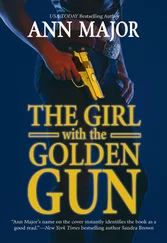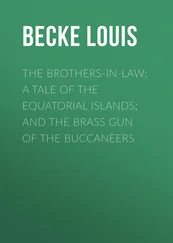Nicholas walked up to the crowd of now terrified children.
“Don’t do it,” Matteson pleaded. “Nicholas, this is no way to handle this.”
Nicholas had seen Matteson watching him through the window of the portable classroom. He knew Billy Cutter was probably in the class as well. “I don’t know how I got in,” Nicholas told Detective Adams. “I did not shoot the door. I did not shoot the door or the knob itself. I shot the glass in the door. I don’t know how I got it open…. When I shot the glass, I guess it shaked the door and got it open.”
Once inside, he quickly spotted Billy Cutter. Cutter had heard the shot and the sound of shattering glass, but was the last to rush to the back of the room and now lay on the floor ahead of the mound of students, fully in the open and utterly exposed. “There were chairs overturned and everything, so I would probably be about three or four feet in front of everyone else,” Cutter later testified.
“Billy,” Nicholas said, “I hate you, man.”
Cutter was screaming, “No, don’t.”
Nicholas aimed the gun at Cutter.
“I know I said his name,” Nicholas told Detective Adams. “I don’t remember exactly what I said about him, because I was mad.”
Others, however, do recall. “Billy Cutter,” Nicholas said. “This is for you. I’m going to kill you.”
As the other students huddled closer and wept and prayed, Nicholas pulled the trigger.
CHAPTER TEN
THE ENFORCERS
GUN AFICIONADOS MAY LIKEN THE BUREAU of Alcohol, Tobacco and Firearms to the Gestapo, but in its relationship to America’s gun dealers it behaves more like an indulgent parent. This is partly the result of concrete restrictions imposed on the bureau by budget and statute, partly of an institutional reluctance to offend its primary source of investigative leads and to provoke the always cantankerous gun lobby—a legacy of the bureau’s near demise in the early years of the Reagan administration at the hands of the National Rifle Association and its powerful allies on Capitol Hill.
In a 1981 congressional hearing, the bureau’s then-director, G. R. Dickerson, defended the bureau, proclaiming to the House Judiciary Committee that the bureau had for the prior two years “focused over ninety-two percent of its enforcement resources on the prevention of violent crime and the pursuit of violent criminals.” ATF had used aggressive, proactive tactics to enforce firearms laws, he said, including undercover stings designed to trap dealers into making illegal sales. The NRA and other members of the gun lobby saw nothing positive in these measures and charged ATF with trampling the constitutional rights of ordinary gun owners. The charge fell on sympathetic ears. In 1981, then-president Ronald Reagan announced his plan to make good on a campaign promise to abolish the ATF.
Today a chastened ATF (rescued at the last minute, as I’ll show, by a most improbable angel, the NRA itself) describes its mission in more modest terms. “There’s been a misconception that we’re in the prevention business,” said Jack Killorin, a former law-enforcement agent who now heads the bureau’s public affairs office. (A plaque on the wall behind his desk identifies him as Jack “Ganja” Killorin, commemorating his role in an ATF raid against a drug dealer.) “We’re not in the prevention business. We’re in the business of catching those people who do wrongful acts, and causing them to be punished, and hopefully finding enough of that to create some deterrence.”
Where once the bureau prided itself on running firearms sting operations, it now describes even its battles against illegal traffickers as a means not so much of halting the proliferation of guns, but of protecting and maintaining the paper trail that tracks a gun from manufacturer to distributor to dealer and finally to first purchaser. “Illegal traffickers in weapons inhibit the effectiveness of the tracing function and must be identified and put out of business,” said a 1992 report from ATF’s divisional office in Detroit. “The integrity of the tracing system must be preserved to ensure that valuable leads continue to be provided to law-enforcement agencies.”
As things stand now, federal gun laws foster a built-in disincentive to rigorous investigation. Gun-purchase records, the most crucial element of the tracing network, remain in the hands of the dealers themselves. When riled, dealers can make the workday lives of ATF agents far more difficult. Good industry relations can mean the difference between merely having to call the dealer on the phone or making a personal visit, a significant bureaucratic obstacle for an undermanned agency. “If it were not for cooperative [dealers],” noted a 1992 report from the bureau’s Detroit office, “ATF’s task in locating and removing illegal firearms sources would be dealt a serious blow.”
All this, however, adds up to a reactive orientation that helps bolster the culture of nonresponsibility in the firearms industry, with the unintended effect of leaving all but the most blatantly crooked dealers free to push the limits of the law.
♦ ♦ ♦
In fairness, ATF stands in an almost untenable position. It must police the nation’s 245,000 licensed firearms dealers—known in the industry as FFLs, or Federal Firearms Licensees—with only four hundred inspectors, each of whom must also conduct inspections of wineries, liquor distributors, distilleries, breweries, tobacco producers, and the country’s 10,500 explosives users and manufacturers. This ratio of inspectors to licensees is an improvement, by the way, over the rough-and-ready 1960s when only five inspectors faced the daunting task of inspecting the records of one hundred thousand gun dealers.
At the same time, the agency finds itself obliged by law to grant a firearms license to virtually anyone who asks for one, provided the applicant has $30 to cover the licensing fee. In 1990, 34,336 red-blooded Americans applied for an FFL. ATF denied licenses to only 75. Another 1,408 withdrew or abandoned their applications, yielding a combined rejection/withdrawal rate of about 4 percent. If the current rate of licensing continues, the number of FFLs will double through the 1990s to well over half a million licensed weapons dealers, even though the fortunes of domestic arms manufacturers are likely to continue their current decline. Increased competition for the shrinking gun-consumer dollar can only increase the already prevalent tendency among dealers to do only the minimum required by law to keep guns out of the wrong hands.
Depending on one’s stance in the gun debate, the application process is either too stringent or appallingly lax. An applicant doesn’t have to demonstrate any firearms knowledge, not even whether he knows the difference between a revolver and a pistol, a .44 or a .45. It is much harder to get a license to operate a powerboat on the Chesapeake Bay, to become a substitute teacher in New Jersey, or to get a California driver’s license—far, far harder to get a Maryland permit to carry a single handgun or a license to hunt in Maryland’s forests—than it is to get a license that enables you to acquire at wholesale prices thousands of varieties of weapons and have them shipped right to your home. Roughly half the federal firearms licensees don’t maintain a bona fide store, according to ATF, but operate instead out of their homes. Some of these “kitchen-table” dealers sell guns at gun shows, but many don’t deal guns at all; they hold a license simply to buy their guns at cheap wholesale prices. A small but obviously important segment use their licenses to buy guns wholesale for distribution to inner-city arms traffickers.
“We’re not in the business of putting people out of the firearms business,” said Anthony A. Fleming, chief of ATF’s firearms and explosives operations branch, in charge of dealer licensing and inspections. “If people qualify for a firearms license, by law we have to issue them a license.”
Читать дальше
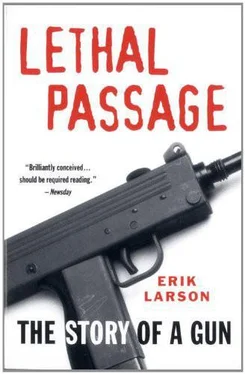
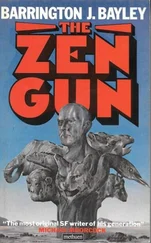
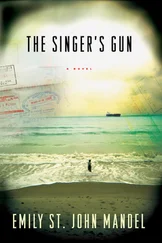

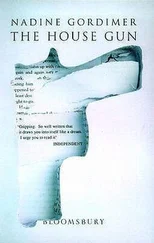

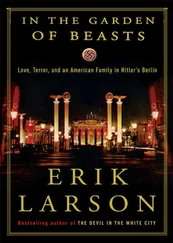

![Ричард Деминг - Whistle Past the Graveyard [= Give the Girl a Gun]](/books/412176/richard-deming-whistle-past-the-graveyard-give-t-thumb.webp)
